This article was medically reviewed by Sarah Gehrke, RN, MS. Sarah Gehrke is a Registered Nurse and Licensed Massage Therapist in Texas. Sarah has over 10 years of experience teaching and practicing phlebotomy and intravenous (IV) therapy using physical, psychological, and emotional support. She received her Massage Therapist License from the Amarillo Massage Therapy Institute in 2008 and a M.S. in Nursing from the University of Phoenix in 2013.
This article has been viewed 133,806 times.
An eye mask can be a useful tool for those having difficulty sleeping due to sensitivity to light. Darkness is crucial for deep sleep, triggering the release of chemicals in the brain, such as melatonin, which help you get to sleep, and remain asleep.[1] To avoid irritation and hassle, you should be careful when selecting your eye mask, and choose a model which is appropriate for your intended use and sleeping position. Once you have a suitable mask, establishing a comfortable sleeping routine is key for enjoying deep, sustained sleep.
Steps
Choosing an Eye Mask
-
1Find a mask that blocks enough light. If you are looking for a mask to help you sleep at night in a relatively dark bedroom, then the mask doesn't need to be particularly thick since there will be very little light. If you are looking for a mask to help you sleep on a plane, in a car, or during the day, then you will want to find a heavier-duty mask.[2]
- It is best to shop for your eye mask in person since many of the important qualities (amount of light blocked, fit, comfort, etc.) are very difficult to evaluate while shopping online.
-
2Choose a mask appropriate for your sleeping position. Masks will typically tie or clasp closed at either the front or side of the head. Laying your head on the side where the mask closes can cause discomfort and make it difficult to sleep. Make sure that the mask you select closes in a location that will not interfere with your preferred sleeping position.Advertisement
-
3Select a comfortable fabric. Eye masks are made of many different materials, from natural materials like cotton and wool to synthetic materials like polyester. Some masks (especially inexpensive varieties) may be made of materials that not everyone will find comfortable. Even a minor tickle or irritation on your face or head may make sleeping in the mask very difficult. Make sure to try the mask on before you buy it if you can.
-
4Ensure a proper fit. An eye mask that is the wrong shape for your face may cause discomfort, and allow in excess light. Try different brands and sizes of masks until you find one that you can wear comfortably.
- When properly adjusted, your mask should be tight enough that it doesn't slide freely around your face, but not so tight that the mask is pressed down directly on your eyes.
- Pay attention to how well the mask fits around the bridge of your nose. If the fit is not correct, you may be able to see light entering through a gap between the mask and your nose. Masks are available with elastic patches covering the bridge of the nose, blocking out the excess light.
-
5Explore additional features. A wide variety of mask options are available with additional features, such as comfortable gel filling, and integral ear muffs to block sound or pleasant scents. Take a look at what optional features are available, and decide if they suit your needs.
- Some new sleep masks have interesting features like flashing lights that may help you fall asleep or have a lucid dream or help to monitor your sleep patterns. There's not a whole lot of research on whether these devices are effective, but they may be interesting to try.
Going to Sleep in Your Mask
-
1Put your mask on and adjust it. This should be done before you go to bed, or otherwise, prepare for sleep. Trying to adjust your mask once you are ready to sleep can be irritating and distracting, especially in the dark.
- Having someone nearby to help you fasten and adjust your mask is a good idea, especially if your mask ties are closed.
- If you don't have your sleep mask with you, you can try covering your eyes with a pillow, blanket, or article of clothing. You can also use your arm as an improvised eye mask, draping your elbow over your face.
-
2Shift your mask up to your forehead. Wearing your mask on your forehead means it will be very simple to access once you're ready to sleep. Once it is in position, you can forget about it and focus on your normal bedtime routine.
-
3Relax in bed. Getting into bed and spending time performing a relaxing activity, such as reading, before donning your eye mask will relax you, and prepare you to go to sleep. Set aside an hour for relaxing in bed, if you can.[3]
- Avoid using electronic devices or watching television right before bed. The light produced by electronic screens may make it more difficult for you to fall asleep.
- It is best to relax in low light, such as the light of a small bedside lamp. This will allow your eyes and brain to begin to relax and ready themselves for sleep. Best to use a light with low levels of blue light or use a dimmer on your lamp.[4]
- If you are trying to sleep on an airplane, or in another public place, it may be helpful to put on headphones or use earplugs to block out outside noise so that you can focus on relaxing.
-
4Turn off the lights and pull down your mask. Having spent time relaxing, you should feel sleepy, and ready to close your eyes. Check to make sure your mask is still adjusted to a comfortable setting, then switch off the lights, pull the mask over your eyes, and lay down your head.
-
5Focus on positive imagery and deep breathing. If you are troubled by anxious thoughts before sleeping, try turning your mind instead to happy or beautiful images or memories. Some find it helpful to simply count their breaths, which should be deep and slow. Let your mind drift with whatever positive thoughts come to mind. You should soon be asleep.[5]
-
6Respond to sleeplessness by getting up. If you find you are still unable to sleep after 20 minutes or so, you should lift up your eye mask, turn on a dim light, and get out of bed. It is best to go to another room if you can. Spend a few minutes reading, listening to calming music, or enjoying another relaxing activity. Once you are ready, go back to bed, adjust your sleeping mask to a comfortable setting, turn out the lights, and lay down your head.[6]
- Be sure to lift up or take off your mask before trying to get up or turn the lights on to avoid knocking things over or tripping.
- If you're trying to sleep on an airplane or train where you can't get up and walk around, spend some time listening to calming music or reading a book instead.
References
- ↑ https://www.sleepio.com/articles/sleep-aids/melatonin-and-sleep/
- ↑ https://www.allaboutvision.com/resources/buyers-guide/sleep-masks/
- ↑ https://sleepfoundation.org/sleep-tools-tips/healthy-sleep-tips
- ↑ http://www.pnas.org/content/112/4/1232
- ↑ https://www.sleepfoundation.org/sleep-hygiene/relaxation-exercises-to-help-fall-asleep
- ↑ https://sleepfoundation.org/insomnia/content/what-do-when-you-cant-sleep
About This Article
An eyemask can be a great tool for blocking out excess light when you’re trying to sleep. If you need to block out a lot of light, choose a thicker mask. On the other hand, if you’re not dealing with a lot of excess light, a thin mask may work fine. Choose a mask that fits your sleeping position, too. For instance, if you sleep on your back, avoid masks that clasp in back since they might irritate your scalp. Pick a mask that fits you well and is made out of comfortable fabric. If your mask is adjustable, put it on and adjust it properly before you try to sleep. Unwind before bed while wearing the mask pushed up on your forehead so you have time to get used to it. When you’re ready for sleep, pull down your mask. If the mask distracts you and makes it hard to sleep, try breathing deeply or focusing on relaxing imagery to help you drift off. For more tips from our Medical co-author, including what to do if you can’t fall asleep with your eye mask on, keep reading!
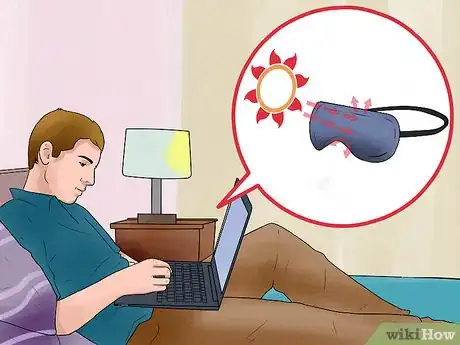



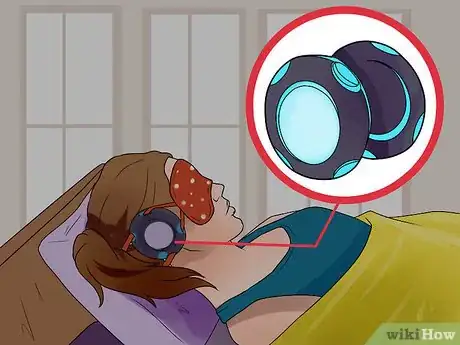
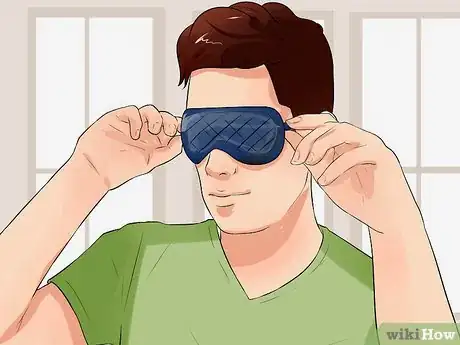


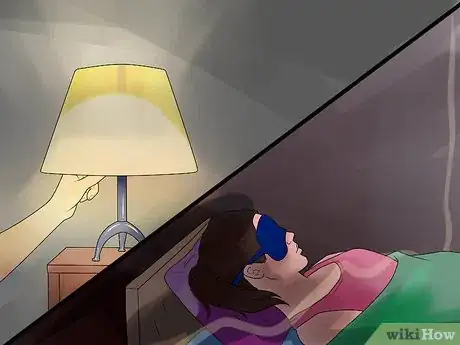

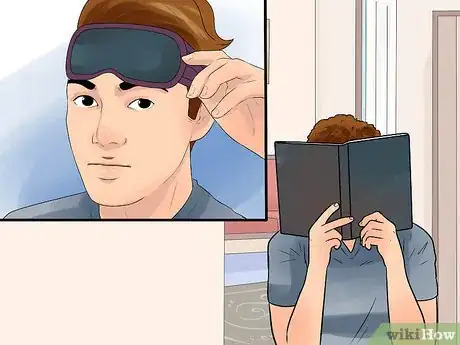
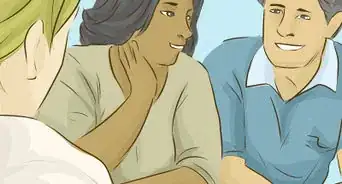
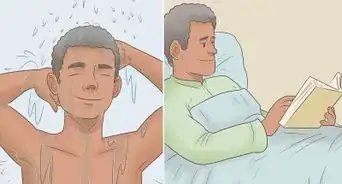
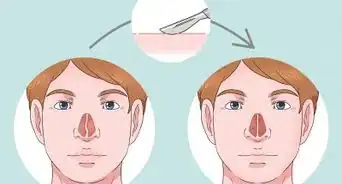
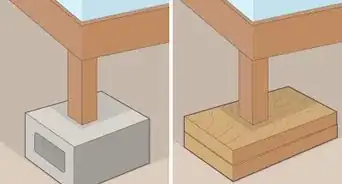
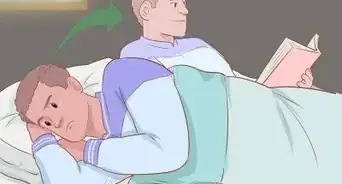

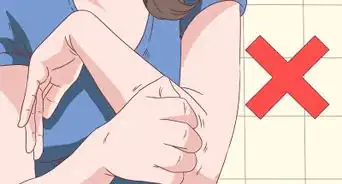


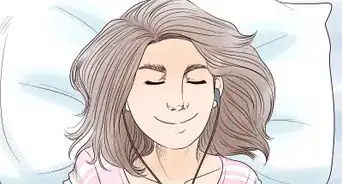
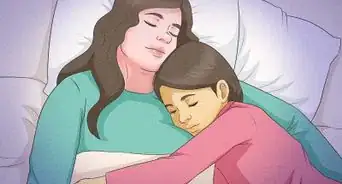
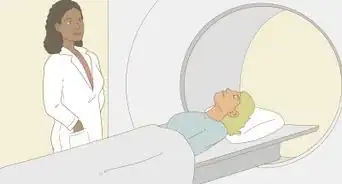










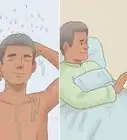
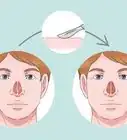
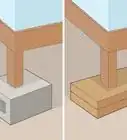



































Medical Disclaimer
The content of this article is not intended to be a substitute for professional medical advice, examination, diagnosis, or treatment. You should always contact your doctor or other qualified healthcare professional before starting, changing, or stopping any kind of health treatment.
Read More...